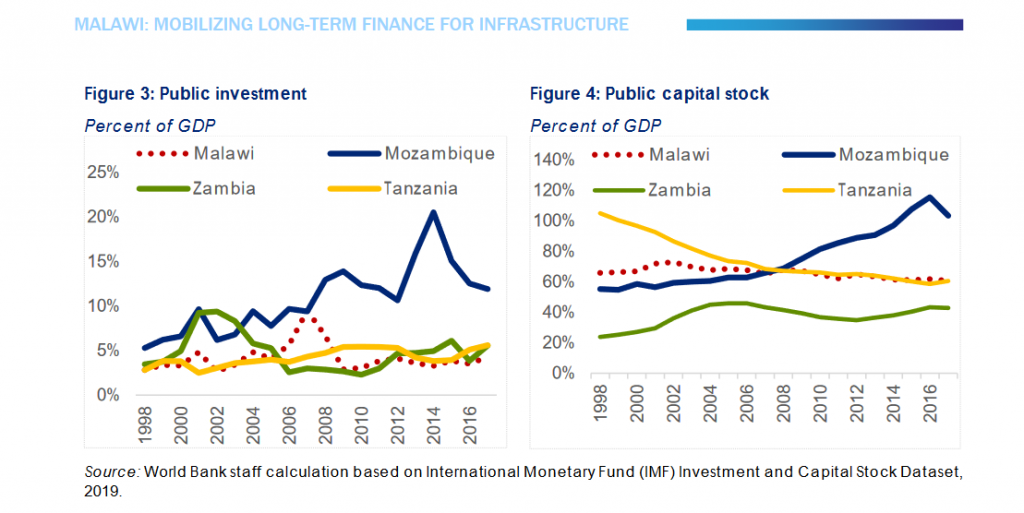Public investments under scrutiny
Public investment in infrastructure in Malawi has been negligible in the past two decades, averaging about 4.18 percent over a 20-year period (1998–2017), World Bank figures have shown.
In its assessment of the country’s infrastructure contained in Malawi: Mobilising Long-Term Finance for Infrastructure Situation, the bank said the situation has been worsened by a sluggish economic growth over the past decade put constraints on the government budget and led to underinvestment.

However, at 4.18 percent, this is lower than in Mozambique (10.7 percent) but similar to Zambia (4.82 percent) and Tanzania (4.21 percent).
In the energy and water and sanitation sectors alone, the bank notes that $7.6 billion will be required over a period of 15–20 years from 2020, or an annual investment of $332 million (about 4 percent of 2019 gross domestic product-GDP) compared to total annual public investment of 4.18 percent of GDP in the past two decades.
Reads the assessment in part: “Malawi’s macro-fiscal instability has had a negative impact on the level of investment, with Malawi having some of the lowest total investment levels in the region. Similarly, the overall level of credit intermediation has been low compared to peers in the region.
“During 2010 to 2018, it averaged 12.7 percent of GDP in Malawi, compared to 30.9 percent in Kenya, 13.0 percent in Tanzania, 14.8 percent in Zambia and 27.9 percent in Mozambique. This was largely driven by low economic growth and high inflation, which had a negative impact on firms’ ability to repay loans, increasing default rates and decreasing commercial banks’ risk appetite.”
Properly targeted public investment can do much to boost economic performance, generating aggregate demand quickly, fueling productivity growth by improving human capital, encouraging technological innovation, and spurring private-sector investment by increasing returns
The Malawi Vision 2063 Agenda states that to ensure consistency in prioritisation of public investments in all the pillars and enablers, the National Planning Commission shall lead in the identification of the flagships.
The long-term development agenda concedes that there are a number of challenges that have constrained progress in infrastructure development in Malawi, the largest being lack of access to long-term development financing.
“The impact of an under-developed economic infrastructure, among other factors, is manifested in a number of challenges the country experiences in the energy, water, ICT and transport sectors,” reads the Malawi Vision 2063 in part.
While infrastructure investment needs are growing, the fiscal space has been declining, driven by low revenue mobilisation and increased borrowing.
From 2007 to 2019, the stock of public debt increased from 28 percent to 63 percent of GDP.
As at end June 2020, Malawi’s total public debt was recorded at K4.1 trillion, the majority of which, at 57.3 percent is domestic debt.
In the 2020/21 Financial Year, Treasury projects an overall balance of K754.8 billion, which will be financed by foreign borrowing amounting to K224.8 billion and K530.1 billion from domestic borrowing.
The Polytechnic associate economics professor Betcheni Tchereni observed that rising debt could make it difficult for the country to get resources for other activities.
In Malawi, Government borrowing continues to be guided by the Public Financial Management Act of 2003 and the Reserve Bank of Malawi Act of 2018. Together, the Acts limit central bank financing, the stock of Treasury Bills and various other debt management procedures.
Ministry of Finance spokesperson, Williams Banda, said in line with the debt sustainability strategy, Treasury is opting for concessionary and foreign denominated loans, which are cheaper.
“We are working tireless to avoid domestic borrowing and when need rises; we would rather go for foreign loans which are cheaper and at lower rates,” he said.




